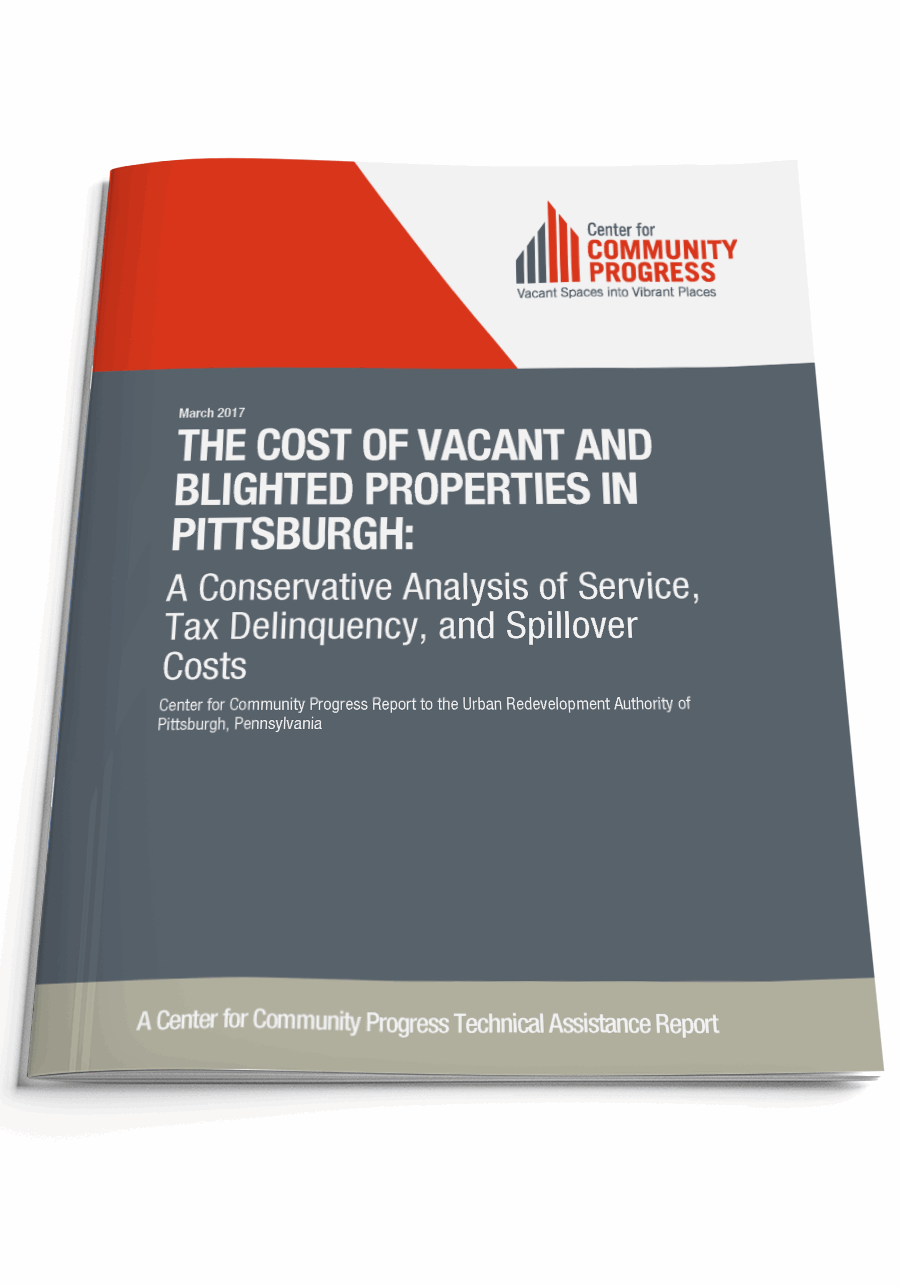The Cost of Vacant and Blighted Properties in Pittsburgh
A Conservative Analysis of Service, Tax Delinquency, and Spillover Costs
Topic(s): Code Enforcement System, Local Analysis, Parcel Data & Neighborhood Markets, Property Tax System
Published: March 2017
Geography: Pennsylvania
Author(s): Center for Community Progress
Across the country, many see Pittsburgh as the “comeback kid” of rust belt cities, and have watched with great interest as the smoky, steel industrial city of the past transforms into a more green, resilient city of the future. After losing half of its population over the last 70 years, Pittsburgh is finally growing again, and Pittsburghers retain a profound sense of pride, strength, and activism. But as with any transformation of this scale, the massive changes taking place across Pittsburgh and the region, coupled with significant urban renewal projects, have had an inequitable impact on neighborhoods across Pittsburgh – an impact that has only exacerbated the effects of decades of disinvestment in neighborhoods.
In Pittsburgh and across the country, vacant properties, in particular those that are abandoned and left to fall into disrepair, affect neighborhoods of all strengths and impose costs – financial, psychological, and public health – on the entire community. In order to raise awareness of the true costs of vacant and distressed property in Pittsburgh, in 2016 the City of Pittsburgh retained the Center for Community Progress to perform a “cost of blight” study.
Our high level recommendations to an improved approach included:
- Invest in the data and resources to understand the scope of the problem
- Increase or reprioritize the budgets of existing City departments to ensure they can be responsive to the impact of vacant and distressed properties on the community
- Invest in proven strategies to mitigate the negative impacts of vacancy
- Ensure the strategies to mitigate vacancy and blight are carried out in a way that revitalizes or equitably stabilizes neighborhoods
- Use this study as a baseline to measure year-over-year progress

Topic(s): Code Enforcement System, Local Analysis, Parcel Data & Neighborhood Markets, Property Tax System
Published: March 2017
Geography: Pennsylvania
Related Publications
Other Related Content
Subscribe to join 14,000 community development leaders getting the latest resources from top experts on vacant property revitalization.
